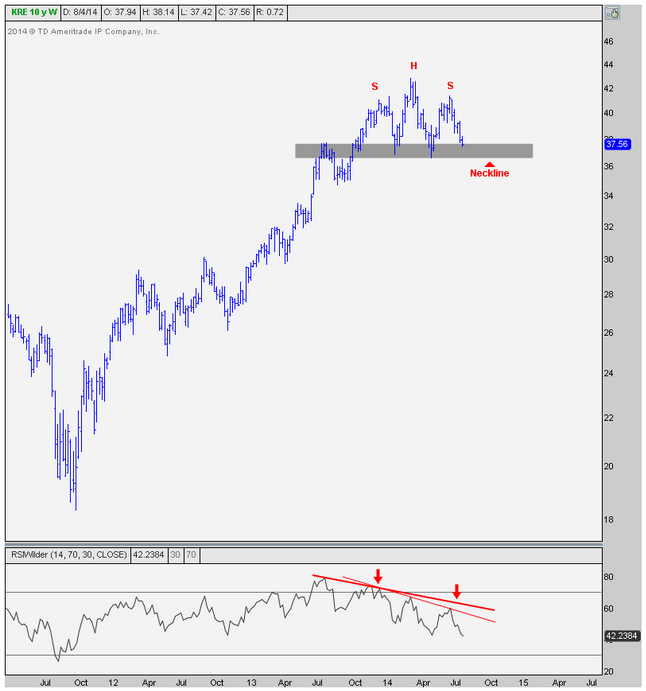Badness Brewing for Regional Bank ETF
With Thursday’s slide, the SPDR S&P Regional Banking ETF (KRE) is off about 6% this year, a particularly glum performance when measured against the 2% gain for the Financial Select Sector SPDR (XLF) .
Those familiar with KRE, the largest regional bank ETF, know the ETF’s utility and sensitivity to interest rates. After last year’s 47.5% surge, KRE has been experiencing that sensitivity to interest rates this year as 10-year Treasury yields have tumbled 19%. [Favored Rising Rates Ideas]
As a result, KRE’s chart is saying something and it probably is not what regional bank bulls want to hear.
“Look at the left shoulder to start the new year, the head in March and right shoulder throughout the summer. We’re now about 80 cents from breaking the neckline which is well-defined by the lows in January and May. The neckline really is the key here. We constantly find head and shoulders patterns that never confirm, so patience is important. But based on all of the evidence, I think there’s a very good chance this one breaks,” said Eagle Bay Capital President J.C. Parets.
Chart Courtesy: J.C. Parets, Eagle Bay Capital
Underscoring KRE’s sensitivity to fluctuations in interest rates is this factoid: A typical 1% move in 10-year Treasuries usually works out to be a 0.44% move for KRE’s holdings. [Regional Bank ETFs Look for Support]
The $2.2 billion KRE applies an equal-weight methodology to its 80 holdings, meaning the ETF is not dominated by just a few bank stocks as so many financial services are. While equal weighting has proven advantageous for scores of ETFs, KRE’s woes and its status as an equal-weight fund underscore broader weakness for regional banks.
No stock accounts for more than 1.58% of KRE’s weight and only six have allocations above 1.45%.
“So as far as KRE is concerned, we want to see a close below $36.80 for confirmation. But remember that we would only want to be short below that level. These types of patterns are notorious for whipsaws, so keep that in mind. I really think this one breaks. We’ll see,” added Parets.

